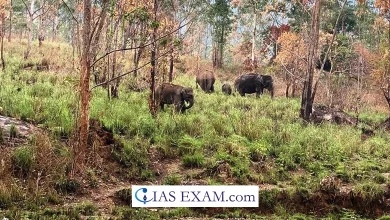Daily Current Affairs for UPSC
Human Genome Sequencing in India reaches 10,000
Syllabus: Science & Technology [GS Paper – 3]

Context
Genome India initiative completed something big, sequencing 10 thousand genomes from across the country in one fell swoop. This accounts of course for a staggering 12.5 % of the entire human genome. These genomes have been specially chosen to represent no less than 99 different populations. All people are of the earth and contrast exists core and skin-deep.
Genome Sequencing and its Applications
- Genome sequencing is the method used to determine an organism’s full genome (complete DNA sequence). This process is one in which every last detail of an organism’s traits is recorded. By examining the precise sequence of the four basic chemical building blocks that make up DNA, adenine (A), guanine (G), cytosine (C), and thymine (T), scientists are better able to understand how an organism works.
- In understanding this complex code, investigators gain unique insights into what makes a particular organism tick genetically. With such profound knowledge under their belt they can then trace life’s mysteries, unravelling through complex puzzles of genetic information that are responsible for organising the development, function and evolution at all levels from the building blocks of cells to whole organisms themselves.
- The use of genome sequencing also constitutes a breakthrough in every kind of biological research, from medical work and personalised medicine to saving endangered species and studies of how species develop over time.
Genome India Project and its Significance
- It is an essential task to map the genetic variations in India, for many reasons. The main task of Genetic Diversity Understanding is to document the genetic differences between individuals within India who are from various regions and ethnicities. These conclusions recognize India’s broad genetic diversity.
- One important thing about a genomics project is the innovation. New treatments can be generated, tailor-made to a person’s individual genetic expression of illness. This is certain to greatly raise our ability to anticipate, prevent and treat disease-yielding features especially those that are common in particular populations.
- R&D and Business Development Vacuum The increase in research and innovation is expected to increase genetic and biotechnological study on a global scale, building especially within India in these areas.
- The results of this project will be for the benefit of the genetics community all over the world. The conclusions from this study could be used to improve crop yield and animal husbandry, giving a shot in the arm to agronomy.
- The project is expected to stimulate economic growth in industries like healthcare and agriculture by moving forward with genomic technologies, leading innovation and development.
Conclusion
- With the completion of the Ministry of Science and Technology Department of Biotechnology’s 10,000 genome project, it seeks to construct an extremely rich Chinese whole-genome sequence database.
- This milestone has at last drawn and positioned a complete genetic map of India which will allow health workers, scientists involved in genetics work to continue their probing into how genetic differences occur in different localities throughout the country.
Source: The Indian Express
UPSC Mains Practice Questions
Q.Elucidate the Socio-Economic impact of Human Genome Sequencing.(150 Words)





.png)



